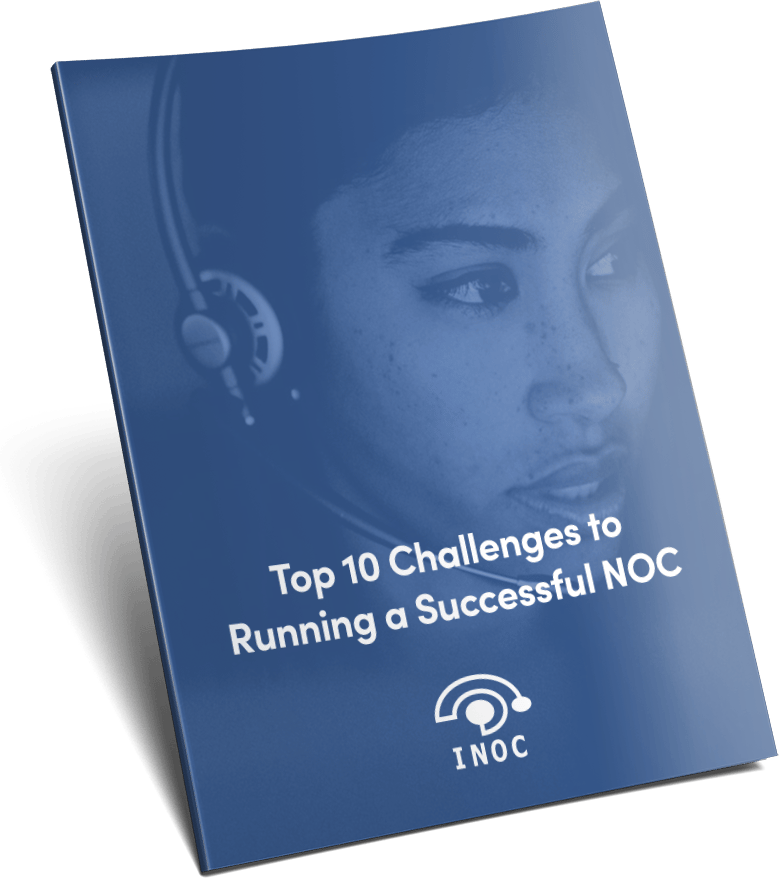
Efficient workflows and fast response times are critical to maximizing IT infrastructure performance and uptime—the core goals of any NOC.
Whether your infrastructure is running in the cloud, on-premises, or a hybrid of the two, the impact of service unavailability can be disastrous. Your NOC needs to be able to detect and respond to issues within acceptable service levels to ensure the impact on your business is minimal.
Top-tier NOCs utilize a Service Level Management (SLM) framework to make and measure progress toward these goals. SLM serves as the foundation for gathering service requirements, establishing service levels, and monitoring and reporting performance according to those service levels.
But implementing an SLM framework to manage NOC service levels isn’t a straightforward process. There’s no handy guidebook for NOCs to follow. As a result, many NOC teams face the following challenges:
Here at INOC, we complement standard KPI reporting, which includes monthly SLA measurements, with an array of additional SLOs to better measure performance and keep both teams aligned on success.
In our view, limiting reporting to just a handful of rigid service levels rarely tells the full story about the quality of NOC service being provided. Limited reporting also ignores important operational signals that serve as inputs for continual improvement.
Our SLM model combines critical KPI reporting with a broader, often more meaningful set of objectives that bring additional data and context into view. In short, we analyze each SLO, break them into their components, and measure each of those. Rather than focusing on a composite metric, we focus on addressing and optimizing each of its component parts.
Take the critical SLO of Mean Time to Restore (MTTR) set at four hours, for example. This measure contains a number of more granular SLIs:
These include:
So, how does this approach to SLM translate into tangible value for a client? Put simply, it drives a constant state of continual improvement. We want to take every opportunity to make processes and activities as efficient as possible. That means closely examining each component of an SLO, spotting those opportunities, and for example, adding automation to make incremental improvements that contribute to greater availability and less downtime.
With this expanded approach to SLM, each monthly report we produce presents both precise reporting around key service levels as well as a big picture perspective that can inform proactive enhancements and optimization.

Download our free white paper and learn how to overcome the top challenges in running a successful NOC.
